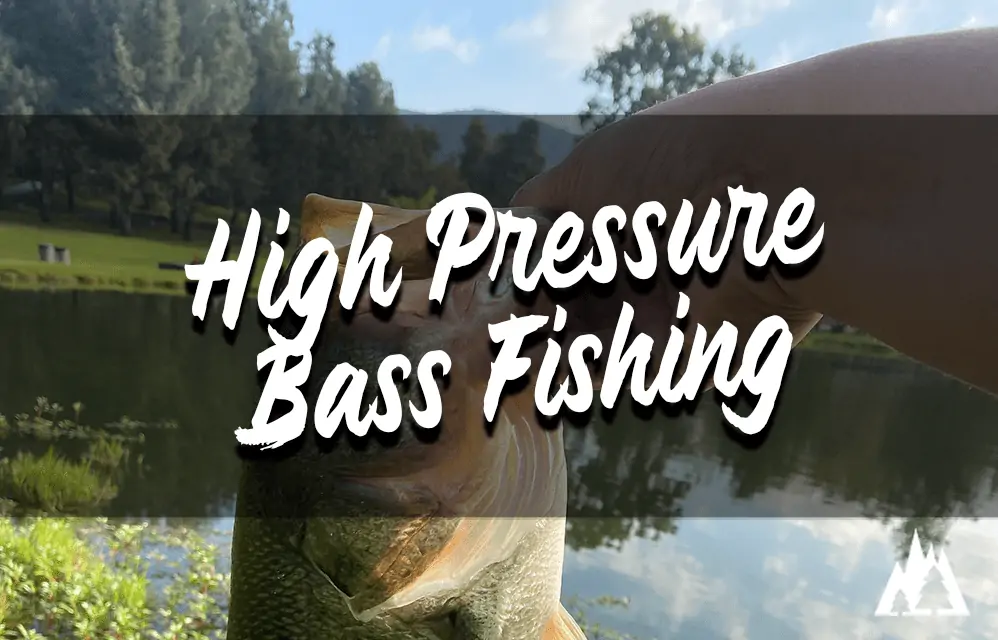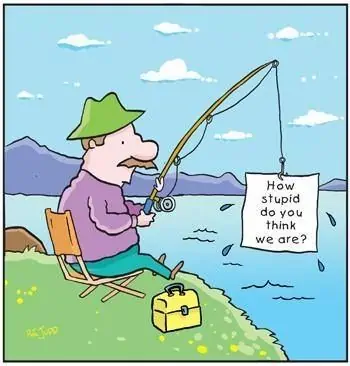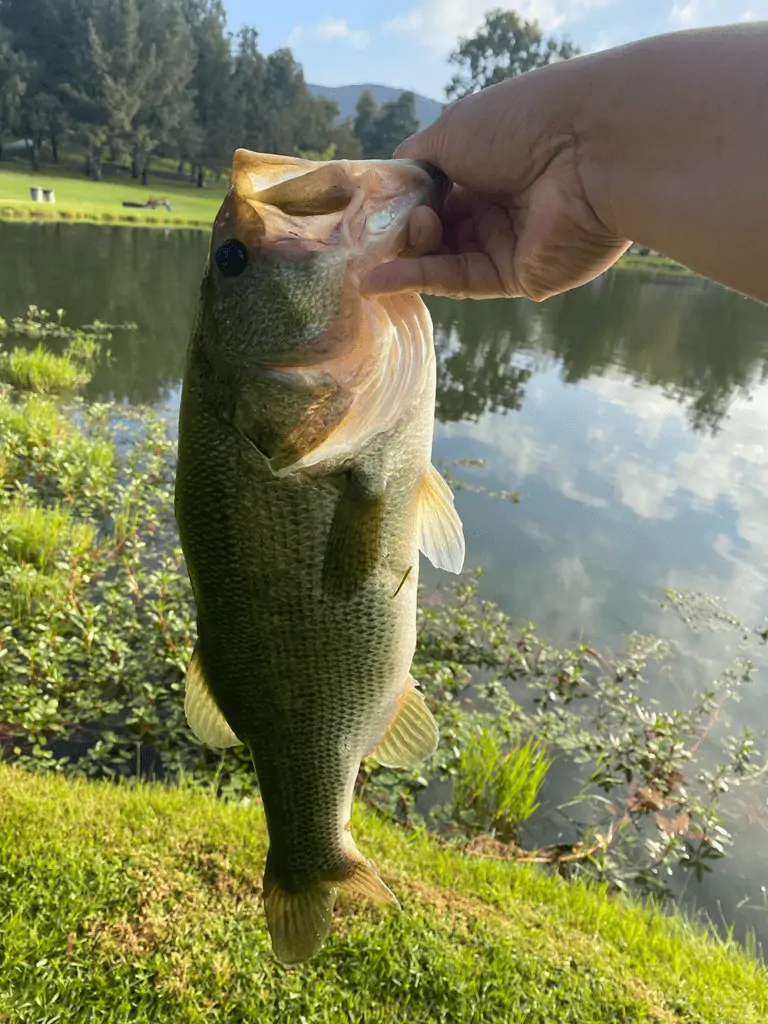High Pressure Bass Fishing: 3 Killer Finesse Worms Rigs

I love to fish, and I try to get my line wet at least 2-3 times a week. I don’t always catch something, but being outdoors and having small conversations with people passing by really makes my day.
Don’t get me wrong, when the bite is on, and it makes a good day a great one.
And on the days when I get skunked (meaning I didn’t catch anything), I can see how it can deter a beginner angler from continuing the hobby.
Last week we went to one of our local fishing reservoirs that are filled with bass. The only problem is that most of the bass here are highly pressured. The lakes and ponds where I’m from are overfished, making the bass extra stubborn.

How Do You Fish Heavily Pressured Bass?
You fish heavily pressured bass by using finesse baits, lighter tackle, and by adjusting your retrieve. The key is to trigger a reactionary bite in pressured ponds when bass are stubborn and selective.
It wasn’t until I switched up my technique that I started catching bass again.
I’ll show you three finesse worm rigs you should try in tough conditions and a few fishing tips for beginners.
To be clear, there have been days (although rare) that these rigs didn’t catch me.
However, I do get bites and probably wasn’t on top of my game those days to effectively set the hook.
It happens, and it’s all part of fishing.
Anyways, let’s get to the rigs.
1. Drop Shot Rig
I love this rig because the tackle needed doesn’t take that much space in your tackle box. To set up a drop shot effectively, you’ll need to have:
- Drop shot hooks
- Bullet or cylinder weights
- Any brand of thin, straight-tail worms
I will always rig up a drop shot before I decide to call it a day. It’s the go-to rig in my arsenal.
I vary my twitches, and I vary my retrieve. The wiggle action it gives the worm will entice the bass to strike when they’re not hungry at the moment.
I love this rig. It has worked well for me in some of the most pressured ponds near me.
2. Neko Rig
When I’m fishing near rocky bottom or parallel to a weed line where I know the bass are hiding underneath, I would throw a Neko rig.
Things you’ll need:
- Nail Weight
- Weedless Neko Hooks
- Silicone O-Rings
- Any brand of thin, paddle-tail worms
The way the worm is rigged up this way, the head of the worm hits the bottom first because of the nail weight.
The tail of the worm sticks up.
As you twitch your rod tip, the worm’s tail undulates in a way that bass can not resist.
Use this rig when you want to work the bottom.
3. Manko Rig
This rig was invented by YouTuber Daniel Manko.
It was an iteration of the Uni Rig from Japan and was growing in popularity over here in the U.S.
When I first saw the Uni Rig last year, I thought it looked ridiculous but at the same time also looked like it could work. Lol.
The Uni rig is a time-intensive rig to build and can be easily destroyed when you catch a bass on it.
But the action it produces is quite amazing. It mimics a wriggling nightcrawler that bass can’t resist.
You’ll definitely have to rig a few of these the night before your fishing trip.
They are fragile, and you don’t want to waste time building this rig out on the water.
A few months after the Uni Rig hype, the Manko rig was created to simplify the build while maintaining a similar wormlike presentation.
The setup is quite simple. You’ll need:
- Drop shot hooks. You’ll need two of them
- Any brand of thin, straight-tail worms
That’s it!
What I love about the Manko rig is the simplicity of it all while maintaining a similar presentation as the Uni rig.
Also, if the worm gets ripped up after a few catches, all you need to do is simply re-hook the worm, and you’re ready to go.
What Is A Finesse Worm?
I might have gotten ahead of myself and assumed many of you know what a finesse worm actually is.
Finesse worms are thin, straight-tail worms that are used with light tackle. When jerked, the thin profile of these worms provides a lot of action that entices bass to strike as opposed to thicker worms like the Senkos.

Additional Tips When Fishing Pressured Ponds
Aside from the three rigs above, there are other factors that can help increase your chances when fishing in pressured ponds for bass.
Talk To The Locals
One of the benefits of fishing pressured ponds and lakes is that you’ll start noticing the same anglers fishing every time you’re out there.
I take a mental note of the areas where these anglers fish the most.
The locals will know the lake better than most.
They’ll know where the laydowns and underwater structures are.
They know where the bass like to hide.
I like sparking a conversation with them, and often times they are so nice they will ask me if I had any luck so far.
They always tell me what lure I should use and areas where the fish are hiding.
I can’t tell you how important this is if you’re unfamiliar with the lake.
This tip alone has helped me catch so many more bass in my community lakes.
I like to go full circle and help out new anglers I talk to.
In fact, I even like to give him a few worms that I’ve used so that they hook one on that day.
It’s good karma; the least I can do is pay the knowledge forward
Check The Weather
Another important tip is to get in the habit of checking the barometric pressure the night before you head out.
There are tons of videos online as to why this affects fish, but the gist of it is:
- High barometric pressure often leads to a tough day of fishing
- Low barometric pressure leads to a few bites and catches (hopefully)
I try and keep things as simple as possible.
I Google the barometric pressure for the city I’ll be fishing the next day.
Most charts will have a bell curve, the barometric pressure, and the time of the day.
I like to look for the times when the curve starts going down in pressure.
Whatever that time is when I’ll start heading out to the lake.
The time of year is also something to consider and where you live in the U.S.
Catching bass in the summer was a lot of fun, even in pressured community ponds.
As the water started cooling, we had to switch up our techniques a bit (drop shot, our favorite of the three so far).
Bait Color
The color of your worm is also important on days when the fish aren’t biting. There are days when I’ll have everything right and not get any bites.
What I like to do, is fish a particular color for 30-60 mins. If I don’t get any bites, I will change the color.
The colors you should always have in your tacklebox, in my opinion, are:
- Black
- Green Pumpkin
- June Bug
- White
Get those colors first, and then you can dive into other colors, such as chartreuse, red, brown, etc.
Lighter Tackle
Another tip when fishing for pressured bass is to go light on your tackle.
I usually have on my baitcaster spooled with a 20lb braid with a 10lb fluorocarbon leader.
When the bass are being ultra-selective, I like to go down to either a 6lb or 8lb fluorocarbon leader.
Fluorocarbon helps to make bass unable to see your line when in the water. Decreasing the diameter will make it more difficult for the bass to see your line.
You can even get an ultralight spinning setup or a BFS combo and go lighter using 4lb test. This will increase your bite, and the fight will be super fun.
Downsizing worm size can also help.
If you’re fishing a 6” worm and you’re not getting bit, try a 4” worm.
You can even downsize the wire gauge of your hooks to light wire hooks. This helps improve the worm’s action in the water and makes it less obvious.
A Note About Fishing Apps
I love fishing apps. It helps me find new fishing holes around my area that I can try. It also gives me weather information, such as the barometric pressure described above.
There are many apps out there like Fish Brain.
My tip I can give you is don’t get discouraged if you’re seeing everyone catching large bass at your local pond.
Most likely, they are tagging different lakes so that their secret fishing spots aren’t flooded with anglers.
There are spots people don’t want to share. I get it.
Not every user on these apps does this, but I do notice the background in their picture doesn’t match the lake they claim the catch was supposed to be.
So use these apps with a grain of salt.






